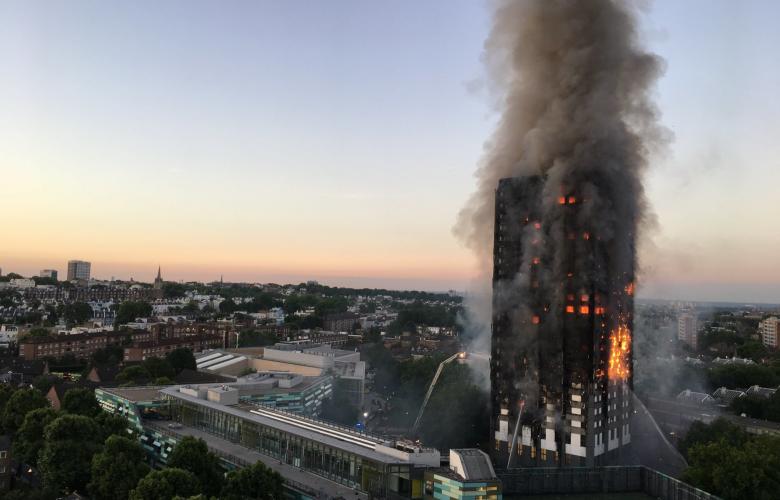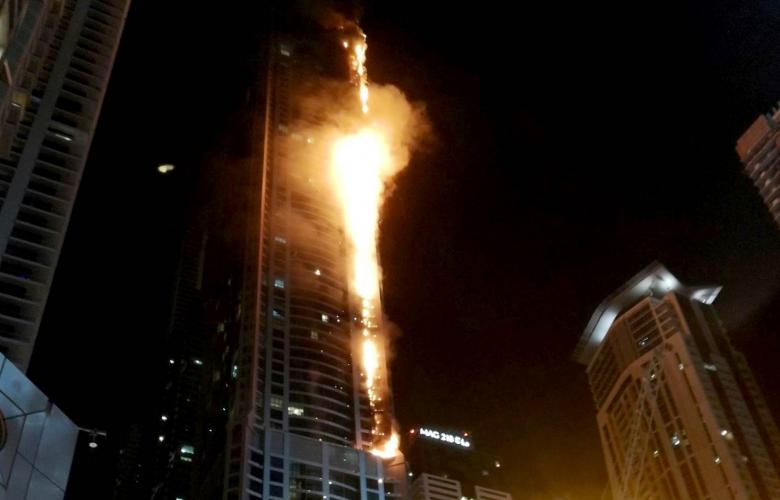A spate of worldwide skyscraper fires has residents asking: Is my building at risk?
A spate of worldwide skyscraper fires has residents asking: Is my building at risk?
Dubai, London and Melbourne have experienced serious fires caused by exterior cladding, and dwellers are worried theirs may be next.
Fire risk and fire safety in tall buildings across the globe has been thrust into the spotlight again after last Friday’s Dubai fire. With similar recent fires at London’s Grenfell Tower and Melbourne’s Lacrosse Apartments, also caused by flammable cladding, new questions about safety in the skyscraper-studded cities of the world have been raised.
The Guardian reports that material used in the cladding that covered the Grenfell Tower was a cheaper, more flammable version of two available alternatives, with the manufacturer asked to supply ‘Reynobond PE’ cladding, which is £2 cheaper per square metre than the alternative ‘Reynobond FR’, which stands for “fire resistant” to the companies that worked on refurbishing Grenfell Tower. The application of similar materials to other building has resulted in devastating tragedies.
Dubai
On Friday 3 August 2017, the 80-storey ‘Torch Tower,’ as it has come to be known, was ignited forcing hundreds of occupants to flee. Luckily firefighters were able to extinguish the flames within a few hours, and no serious injuries were reported. This follows the 2015 fire at the same building where 60 floors were damaged. Parts of the building were still being renovated when this month’s fire struck. The New York Times reports that “investigators concluded that the exterior cladding, made of aluminium panels with combustible plastic cores, had accelerated the flames.”
Also in Dubai, the 63-story 5-star Address Hotel, which consists of 200 rooms and more than 600 apartments, was engulfed in flames on new Year's Eve in 2015, covering 20 floors of the building, with 16 people suffering minor injuries. The fire engulfed the external cladding of the hotel, but did not spread inside, with the initial cause of the blaze still unknown.
London
On 14 June 2017, the 24-storey apartment building in West London, Grenfell Tower went up in flames, again the extent of the fire blamed on composite cladding. The initial cause of the fire was a refrigerator on the 4th floor but when the fire spread, it reached the exterior cladding which ignited and engulfed the exterior. According to Craig Ross, Partner and Head of Project and Building Consultancy at Cavendish Maxwell in Dubai, “The Grenfell Tower fire saw 24 stories containing predominantly 129 one and two bedroom flats go up in flames in West London. The external retrofit cladding the building had installed has been blamed for the speed at which the fire spread up the facade.
"Both the issues of insulation type and the voids behind the cladding contributed to the speed and ferocity of the Grenfell Tower blaze. The external cladding may not have been in accordance with regulations, either in detailing or in material specification which is likely to have caused the fire to spread so quickly and engulf the building.
"The extremity of the Grenfell Tower which caused a staggering 80 deaths in a country that has been developing its fire safety regulations since the Great Fire of London in 1666, has highlighted fire risk and fire safety across the globe.”
Melbourne
On 25 November 2014, The Lacrosse Apartments in Melbourne’s Docklands, suffered a similar fire as the Grenfell Tower tragedy as it is clad in a similar material. A discarded cigarette on a balcony started a fire that very quickly spread up the face of the building in less than 11 minutes. Levels six to 21 of the 23 levels were affected by fire and more were affected by water damage. Luckily there were no injuries or deaths. According to the Melbourne Victoria Government, “inspections after the fire raised questions about materials used on the external façade wall. A post incident analysis (PIA) has been undertaken by the Melbourne Metropolitan Fire Brigade (MFB) which identified that the external wall between the balcony and bedroom was not non-combustible. This is contrary to the prescriptive requirements of the Building Code of Australia (BCA) for Type A construction.” A non-compliant imported product called Alucobest, which looks exactly the same as the compliant Australian-made product was used on the Lacrosse Apartments.
The Victorian government has recently established the Victorian Cladding Taskforce to fast-track the investigation into how widely flammable cladding has been used on Victorian high-rise buildings. Read more about that here.
Ben Robertson and Patricia Monemvasitis of Carroll & O'Dea Lawyers say: “owners in the Lacrosse Apartments have been left with a large bill to replace non-compliant cladding of $8.6 million, in addition to $6.5 million in costs to rectify fire damage to the building – with 470 owners that equates to sizable special levies to cover those costs.
Facing an order to replace the non-compliant cladding, the owners and the builders of the Lacrosse Apartments appealed to the Victoria Building Appeals Board submitting that an alternative solution (which included the installation of water sprinklers) should be adopted in preference to removing the combustible cladding. The Building Appeals Board rejected that alternative solution proposal and determined that the combustible cladding must be removed.
Australians are beginning to ask “could the same thing happen here?”
See also:
Flammable cladding in high rise? It’s time to revisit issues for buyers and existing owners
The tallest building in the world, Saudi Arabia's Jeddah Tower's construction is delayed





